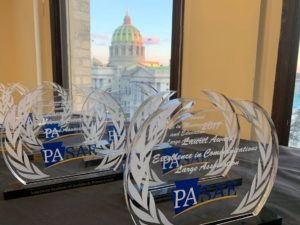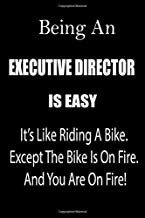Professional development is the cornerstone of great associations and chambers. Summertime is when most executives boost knowledge, exchange information and explore certification.
The summer of 2020 will be different. Many educational opportunities are being postponed or cancelled during pandemic and economic recovery.
For instance, the US Chamber’s Institute for Organization Management (IOM) made a tough choice about its three summer campuses, a program founded 99 years ago.
They stated, “After much consideration and continuous monitoring of the coronavirus (COVID-19), the Institute team has made the decision to cancel 2020 summer sites.…the inherent risk is too great at this stage of the pandemic.”
“IOM quickly pivoted to create a series of webinars, led by Institute faculty members, to provide value to our students and members, that will run through the summer months,” said Raymond P. Towle, IOM, CAE, Vice President, Federation Relations and Institute for Organization Management U.S. Chamber of Commerce.
Pursuit of Excellence
Don’t let pandemic and economic recovery curtail professional development. This may be the best time to focus on personal and organizational improvement.
I’ve heard varied reasons against professional development. “I’m too busy to get my certification.” “Who’s got time to read?” “Award applications require that I organize and submit documents.”
There are many avenues to pursue excellence.
To become certified, it is a process requiring application, study and testing. The CAE is offered by the American Society of Association Executives. CCE is available from the American Chamber of Commerce Executives. Check their websites for requirements.
Organizational accreditation is another way to affirm quality. The purpose is to elevate the profession and set benchmarks for excellence.
For state and local chambers is it is offered by the US Chamber of Commerce. State accreditation programs are managed by some of the chamber networks.

Recognitions and awards are a sign of excellence. Most are offered by the state ASAE allied societies or the associations of chambers executives.
Similar recognitions may be offered by parent organizations in a federated structure. If you find you have missed a deadline, check if it has been extended during these trying times. Most organizations offer scholarships in addition to awards.
I visited the state office of the American Institute of Architects (AIA) in Harrisburg. They display awards received from the Pennsylvania Society of Association Excellence. PSAE promotes awards for communications, meetings, membership and individual recognitions.
Most states have quasi-governmental quality programs aligned with the US Baldrige Award. They apply to nonprofit organizations, too. Areas of criteria include leadership, strategy, member service, analysis, workforce, processes and results. For more information visit https://www.nist.gov/.
Publishing
Sharing thoughts and experiences can be cathartic. With fewer interruptions, now may be a good time to write articles, contribute to a blog or start a book.
Every executive has ideas to share, as well as horror stories. Writing may support certification or recertification requirements.

To document your time and thoughts during recovery, keep a journal. The 120-page blank notebook available from Amazon titled, “Being an Executive Director is Easy, it’s like Riding a Bike, Except the Bike is on Fire….,” seems ideal.
“This is a chance to work on an article I promised to write with Bob Harris about his passion on embracing and integrating the strategic plan. I’m going to get it done since I save time not commuting to the office,” said Josh McFall, CAE, RCE, Chief Executive Officer, Huntsville Area Association of REALTORS®.
Good Reads
This may be the time to read or reread books with ideas to improve organizations. Here are a few of my favorites, new and old.
Platform Revolution by Geoffrey G Parker – A review of how technology and disruptors may impact associations and how we do things. Imagine the member who says, “I don’t need your association because I found a platform to keep me informed and with plenty of resources accessible on my smart photo.”
Pivot Point by Sheri Jacobs – Examples abound of once-dominant organizations that succumbed to competitors and start-ups because they failed to adjust their business model when such a shift amid rapid change could have made all the difference.
Pivot Point provides a guide for creating an organization that is more responsive, nimble, and open to the dynamic nature of its operating environments.
Associations for 21st Century – A free 112-page publication from the Center for International Private Enterprise. It provides associations with best practices and practical tools to help executives. Available on-line at: https://www.cipe.org/wp-content/uploads/2019/01/BA-for-the-21st-Century-2016.pdf
E-Myth Revisited: Why Most Small Businesses Don’t Work and What to Do About It by Michael Gerber – Published 25 years ago, it still offers insights into organizing a business, applicable also to associations. Identify the recurring activities and events, document them, create best practices, and organize them so staff can provide customer service excellence. Associations usually organize their operating procedures in manuals for governance, management, communications and crisis management.
Good to Great: Why Some Companies Make the Leap by Jim Collins – Describes how companies (applicable to associations and chambers) transition from being good to great. I often remind board members, “good is the enemy of great.”
Race for Relevance: 5 Radical Changers for Associations by Harrison Coerver and Mary Byers – A realistic look at realities and how associations can remain relevant. The authors examine five areas for change: Overhaul the governance; empower staff, know the membership market; assess programs and services; and focus where you can have an effect.
Webinars
Educational organizations are adapting to social distancing with new formats such as webinars, town halls and webchats. Many of the sessions are free or have nominal registration fees.
These organizations have a cadre of instructors eager to teach. Research allied organizations and your interests to find webinars you can join.
Adapt during the pandemic and economic recovery to pursue personal and organizational excellence. When organizations return to offering conferences and seminars, add them to your calendar and keep them in your budget.
Very well done blog Bob. Thank you for your insights and wisdom. The Good Reads are great suggestions. I will be on Amazon today picking up my copies.